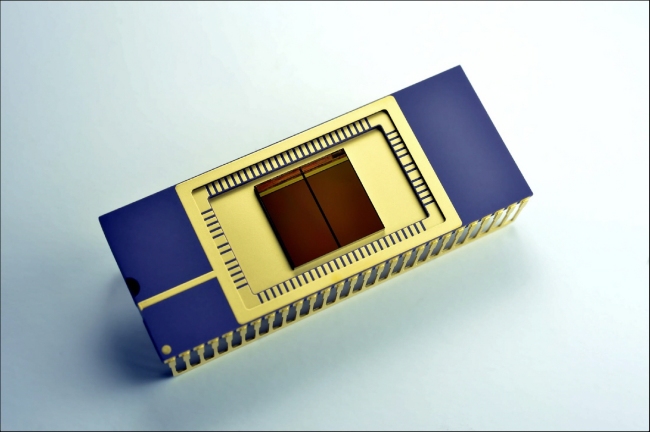[THE INVESTOR] Samsung Electronics, the world’s largest memory chipmaker, will reportedly start to install manufacturing tools for the 3-D NAND flash memory next month at its manufacturing complex being constructed in Pyeongtaek, Gyeonggi Province.
The installation of the chip equipment is in line with Samsung’s efforts to speed up the launch of the manufacturing complex amid the neck-and-neck competition among global chip companies to secure an upper hand.
Samsung aims to launch the manufacturing park in December or next January, several months earlier than previously scheduled, local business news outlet Chosun Biz reported.

The manufacturing complex will then be fully operational as early as March next year after completing a series of test runs in January.
“As more semiconductor companies, including Intel and Toshiba, are increasing their bets on the memory chip business, Samsung seems to be trying to advance the launch of the complex and further get ahead,” said an industry source who wished to be unnamed.
Samsung has poured 15.6 trillion won (US$14.2 billion), as part of the first batch of investments, to build the Pyeongtaek complex, which will incorporate the four chip manufacturing lines, dorms and other facilities on the 2.8 million square meter land.
The total amount of investment in completing the construction of the complex is estimated to reach 100 trillion won.
Samsung had previously planned to roll out DRAM chips from the first of the four production lines at the complex, but recently decided to churn out 3-D NAND flash memories, which are in high demand in recent months.
The first manufacturing line is expected to boast a monthly production capacity of 90,000 to 100,000 wafer sheets.
The 3-D NAND flash memory is deployed in the solid-state drive, a storage system which is increasingly replacing the hard disk drive.
Samsung is the world’s largest SSD maker with its market share accounting for 37 percent.
The global DRAM sector, on the other hand, suffered from months-long price drops due to oversupply and market saturation.
By Kim Young-won (wone0102@heraldcorp.com)
The installation of the chip equipment is in line with Samsung’s efforts to speed up the launch of the manufacturing complex amid the neck-and-neck competition among global chip companies to secure an upper hand.
Samsung aims to launch the manufacturing park in December or next January, several months earlier than previously scheduled, local business news outlet Chosun Biz reported.

The manufacturing complex will then be fully operational as early as March next year after completing a series of test runs in January.
“As more semiconductor companies, including Intel and Toshiba, are increasing their bets on the memory chip business, Samsung seems to be trying to advance the launch of the complex and further get ahead,” said an industry source who wished to be unnamed.
Samsung has poured 15.6 trillion won (US$14.2 billion), as part of the first batch of investments, to build the Pyeongtaek complex, which will incorporate the four chip manufacturing lines, dorms and other facilities on the 2.8 million square meter land.
The total amount of investment in completing the construction of the complex is estimated to reach 100 trillion won.
Samsung had previously planned to roll out DRAM chips from the first of the four production lines at the complex, but recently decided to churn out 3-D NAND flash memories, which are in high demand in recent months.
The first manufacturing line is expected to boast a monthly production capacity of 90,000 to 100,000 wafer sheets.
The 3-D NAND flash memory is deployed in the solid-state drive, a storage system which is increasingly replacing the hard disk drive.
Samsung is the world’s largest SSD maker with its market share accounting for 37 percent.
The global DRAM sector, on the other hand, suffered from months-long price drops due to oversupply and market saturation.
By Kim Young-won (wone0102@heraldcorp.com)




![[Herald Interview] 'Amid aging population, Korea to invite more young professionals from overseas'](http://res.heraldm.com/phpwas/restmb_idxmake.php?idx=644&simg=/content/image/2024/04/24/20240424050844_0.jpg&u=20240424200058)












![[KH Explains] Korean shipbuilding stocks rally: Real growth or bubble?](http://res.heraldm.com/phpwas/restmb_idxmake.php?idx=652&simg=/content/image/2024/04/25/20240425050656_0.jpg&u=)

